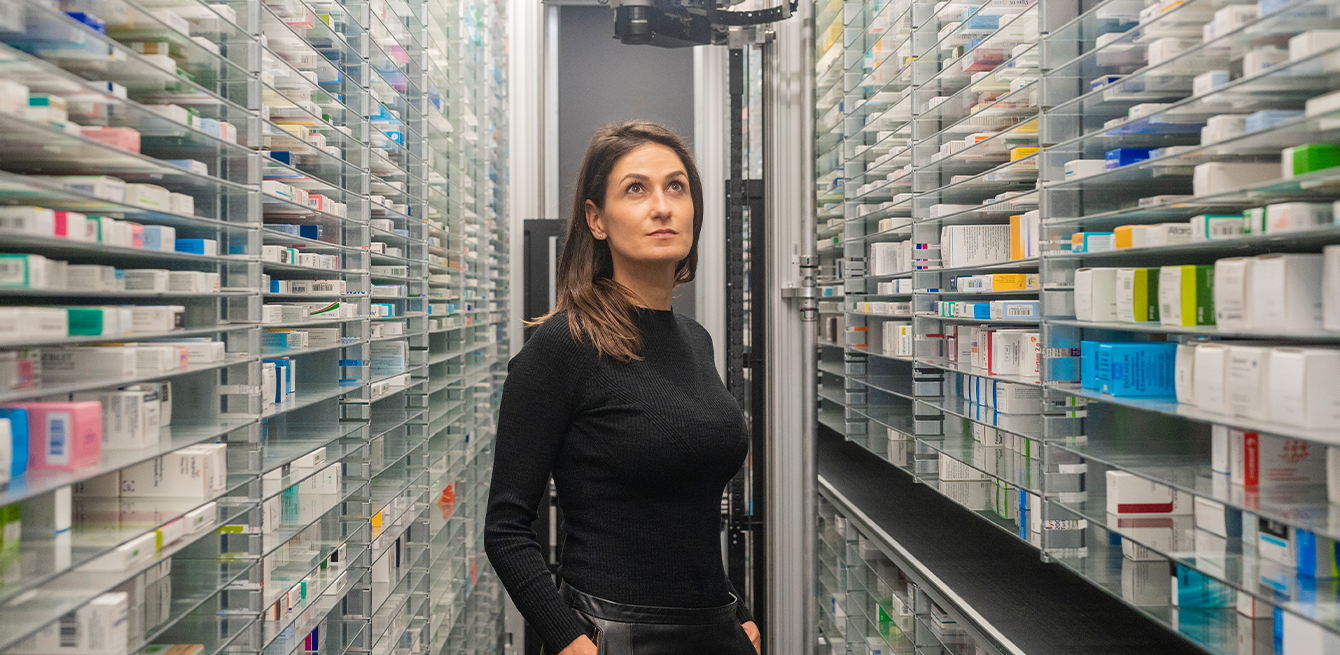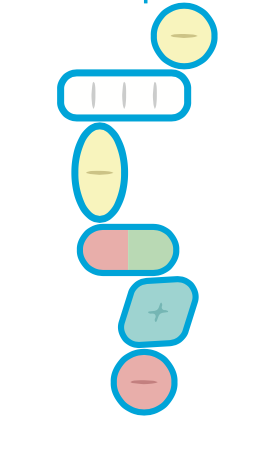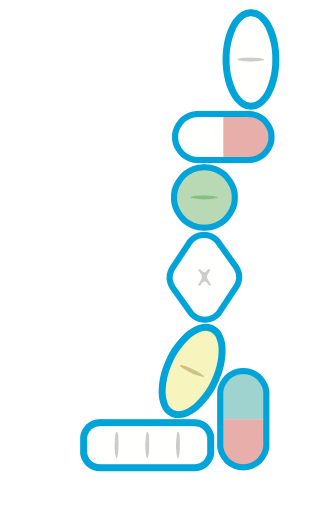
A treatment’s side effects are often poorly understood. Several studies conducted at the CHUV offer solutions to improve the situation.
Nearly one out of two people in Switzerland takes medication every week.
This report, based on a survey conducted by the Swiss Federal Statistical Office (SFSO) of the population aged 15 and over, shows an increase of more 30% since the 1990s.
The most frequently taken drugs in the seven days prior to taking the survey were painkillers (24% of respondents), antihypertensive drugs (16%), cholesterol treatments (8%) and heart treatments (7%). Sleeping pills, tranquillisers and antidepressants complete the ranking.
The SFSO study also indicates that women take drugs more often than men (55% compared to 45%). Finally, the proportion of people taking medications increases with age, reaching 84% for people aged 75 and over.
These figures raise questions about how much patients know about the substances they are taking. Several studies suggest that drug doses are sometimes administered inaccurately, particularly in children and the elderly. Furthermore, a large number of patients are unaware of the main side effects of the pills they ingest.
These questions also interest Jenny Gentizon, a doctoral candidate in nursing sciences with the Faculty of Biology and Medicine at the University of Lausanne (UNIL). As a trained nurse, she has co-supervised several studies on the subject and is currently preparing a dissertation on the ability of elderly people in hospital to understand how they should take their medications, covering the many cognitive and social skills patients need to manage their treatment.
“Medication adherence, i.e. whether patients take their medications as prescribed, has so far been assessed mainly in terms of whether it’s optimal. About half of the patients who manage a long-term medication strategy do not take it as prescribed,” says Jenny Gentizon. “But more recent studies encourage distinguishing between voluntary and involuntary non-adherence. Factors such as impaired vision, cognitive problems or lack of understanding of the care plan can contribute to involuntary non-adherence to medications in older people.”
Over the past two years, the researcher has had the opportunity to co-supervise several master’s degree studies on the medication of hospitalised older people in the canton of Vaud. One of the studies examined patients’ knowledge about their oral anticoagulants. Based on a survey with true-or-false questions, findings showed an average of 68.3% correct answers. Side effects, monitoring, interactions with other drugs and lifestyle adjustments were the areas where patients had the poorest understanding. “One important finding was that one-third of patients were unaware of the main risk of oral anticoagulation therapy, which is the risk of bleeding,” Jenny Gentizon says. “The study also found correlation patterns between patients’ level of knowledge and their age and education level.” These results emphasise the importance of assessing patients’ knowledge and of implementing targeted actions to prevent problems from occurring.
The same cohort of Vaud-based patients then completed a questionnaire on their “sense of self-efficacy” towards self-management of their medications, i.e. their confidence in taking them as prescribed. Of those surveyed, 93% were polymedicated (i.e. taking more than five drugs simultaneously). Almost 18% of the cohort even had to take 10 or more medications. The elderly are in fact confident about their care management, with an average efficacy of 33.4 out of 39 points. “Despite the lack in knowledge mentioned above, patients report a relatively high sense of efficacy,” Jenny Gentizon says. “However, the study identified two points that healthcare professionals need to be aware of: patients are less confident in their ability to follow the care plan after a change in prescription, or when their medications cause adverse side effects.”
Although the two exploratory studies conducted in the canton of Vaud are not intended to formulate recommendations for changes in practice, they highlight several possible adaptations as a safety net, the researcher says: more information and targeted education using simple language and written materials with illustrations. “Another aspect to be developed is the use of the teach-back method.” This approach involves providing information then asking people to explain what they have understood in their own words. “Hospitalization does not always provide the best environment for remembering information (fatigue, stress, feeling lost). In a context where the patient is required to see several specialists, strategies need to be designed to enhance the continuity of information between the healthcare staff, patients, and family and friends. Getting loved ones more involved would meet their need of wanting to help more. For example, having the patient’s health records in a single pharmacy is a practical way to strengthen patient follow-up.”
Jenny Gentizon is currently completing her dissertation on the ability of hospitalised older adults to take medications correctly, financed by the CHUV and under the supervision of Dr Cédric Mabire. “This concept underlines the complexity of the cognitive and social skills that patients need to manage their medications. That means knowing more than the drug names, precautions and monitoring. It requires communicating well with healthcare professionals in order to ask questions, participate in decisions or express disagreement about a particular drug. It also means being inventive within the established daily routines, personal strategies to warn others if problems arise, and monitoring of the care plan.”
The dissertation aims to develop a tool to measure the ability of elderly patients to understand how to take their medications, called MED-fLAG. To help her, Jenny Gentizon can rely on a specific co-researcher, Éric Pilet, age 77, who has been hospitalised more than 50 times. A member of the ColLaboratory, a unit at the UNIL unit that connects researchers and citizens, he immediately came forward to take part in the project. “MED-fLAG is being developed with an interprofessional team, but including a participant co-researcher brings an invaluable contribution to the production of knowledge. This enables researchers to better understand the reality of people who manage medications every day, and the multitude of challenges they face throughout the care path.” /
Jenny Gentizon is completing a dissertation on the ability of senior citizens to take their medication correctly.
She is a doctoral candidate in nursing sciences with the Faculty of Biology and Medicine at the University of Lausanne (UNIL).

In Swiss francs, the size of the Swiss market in 2019 (at wholesale price), according to data from the pharmaceutical umbrella organisation Interpharma.

The percentage of drugs distributed through pharmacies. These days, pharmacies are the main drug distribution channel. In terms of value, they account for about 48% of total market revenue. Other distribution channels include doctors, chemists and hospitals.

The share of the budget that goes to medication in Switzerland, out of total healthcare expenditure.
Percentage of women with cardiovascular disease. This type of disease is the most frequent cause of death in Switzerland. For men, the percentage is 29.6%.